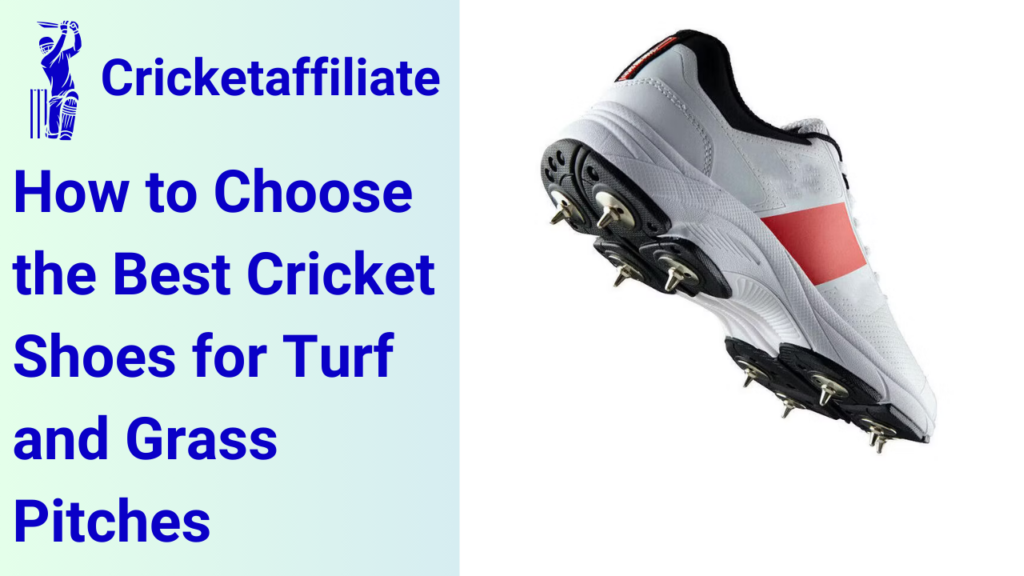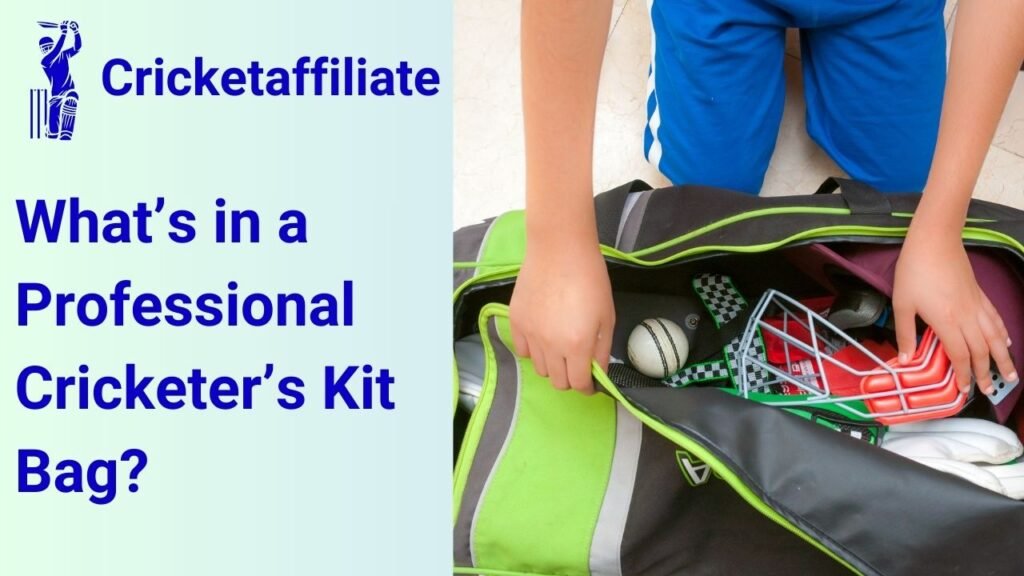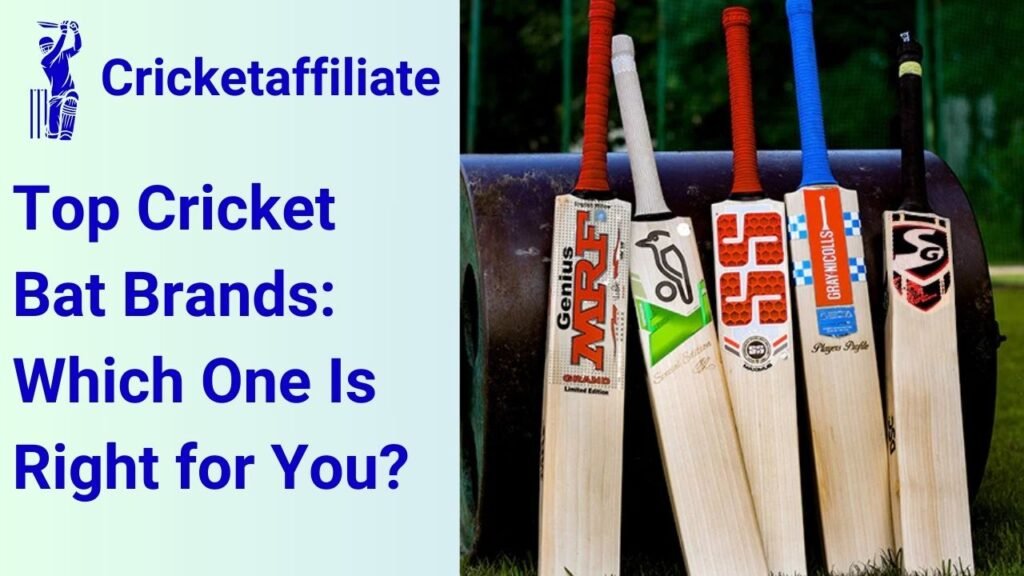Cricket is a game of skill, precision, and adaptability. While players often focus on their batting, bowling, or fielding skills, the importance of the right cricket shoes is often underestimated. Choosing the perfect pair of cricket shoes is vital to ensure comfort, stability, and enhanced performance on the field. The playing surface—whether it’s turf or grass pitches—plays a significant role in this decision. In this article, we will guide you on how to choose the best cricket shoes for turf and grass pitches, helping you optimize your game.
Why Cricket Shoes Matter
Cricket shoes are not just about looking good on the field. They provide essential support, grip, and protection. Poor footwear can lead to injuries, discomfort, and underperformance. Here’s why choosing the right cricket shoes is crucial:
- Better Traction: Cricket shoes offer excellent grip, reducing the risk of slips or falls.
- Injury Prevention: Proper cushioning and design minimize strain on your feet, ankles, and knees.
- Enhanced Performance: Shoes designed for cricket improve speed, stability, and agility.
- Adaptability: Different shoes cater to varying surfaces, ensuring you stay at the top of your game regardless of the pitch.
Understanding the Difference Between Turf and Grass Pitches
Before diving into the specifics, it’s essential to understand turf and grass pitches.
Turf Pitches
- Usually made of synthetic materials, providing a hard and smooth surface.
- Commonly found in training facilities or indoor arenas.
- Require shoes with flat soles or rubber studs for grip without damaging the surface.
Grass Pitches
- Traditional, natural surfaces seen in professional matches.
- Often soft and uneven, requiring shoes with metal or molded spikes for traction and stability.
By identifying the type of pitch you’ll predominantly play on, you can narrow down your options for the best cricket shoes.
Features to Look for in Cricket Shoes for Turf Pitches
When playing on turf pitches, your shoes must cater to the unique requirements of this surface. Here are the key features:
1. Rubber Studs or Flat Soles
Rubber studs or flat soles provide excellent grip without damaging the artificial turf. Avoid metal spikes as they can harm the surface.
2. Lightweight Design
Turf cricket requires quick movements, so lightweight shoes are ideal for agility and comfort.
3. Durability
Turf surfaces can be abrasive, so choose shoes with robust materials that can withstand wear and tear.
4. Breathability
Synthetic pitches can heat up, making breathable shoes essential for keeping your feet cool and sweat-free.
Features to Look for in Cricket Shoes for Grass Pitches
Grass pitches demand a different set of features to tackle their challenges.
1. Spiked Soles
For grass pitches, metal or molded spikes provide the grip needed on soft, uneven terrain.
2. Cushioning
Natural pitches can be unpredictable. Shoes with proper cushioning reduce impact and offer comfort during long matches.
3. Water Resistance
Grass pitches are often damp, especially in the morning or during dew hours. Shoes with water-resistant uppers keep your feet dry.
4. Ankle Support
Soft grass can cause instability. Shoes with enhanced ankle support help prevent twists and sprains.
Comparing Cricket Shoes for Turf vs. Grass Pitches
| Feature | Turf Shoes | Grass Shoes |
|---|---|---|
| Sole Type | Flat or Rubber Studs | Metal or Molded Spikes |
| Weight | Lightweight | Moderate Weight |
| Grip | Moderate for Smooth Surfaces | High for Uneven Terrain |
| Water Resistance | Not Always Necessary | Essential for Damp Conditions |
| Durability | High for Synthetic Surfaces | High for Outdoor Conditions |
This table highlights the distinct requirements for each type of pitch, making it easier to decide based on your playing environment.
Tips for Selecting the Best Cricket Shoes
Here are some practical tips to guide your purchase:
1. Know Your Playing Style
- Batsmen need lightweight shoes with good cushioning for long innings.
- Bowlers should look for shoes with reinforced soles and toe protection.
- Fielders benefit from shoes with excellent grip and flexibility.
2. Choose the Right Fit
Ill-fitting shoes can cause blisters, discomfort, and injuries. Always try shoes on before purchasing and ensure there’s enough room for toe movement.
3. Consider the Pitch Conditions
Evaluate whether you play more on turf or grass pitches. If you switch between both surfaces, consider hybrid options with removable spikes.
4. Look for Brand Reputation
Brands like Adidas, Nike, Puma, and Asics offer cricket-specific shoes with proven quality and performance.
5. Don’t Compromise on Comfort
Even the best cricket shoes are ineffective if they’re uncomfortable. Prioritize padded insoles, breathable materials, and lightweight designs.
Maintenance Tips for Cricket Shoes
To prolong the life of your cricket shoes, follow these maintenance tips:
- Clean Regularly: Remove dirt and mud after every game.
- Dry Properly: Air-dry your shoes to prevent odor and bacteria. Avoid direct sunlight to preserve material quality.
- Store Safely: Use a shoe bag or box to protect them from dust and moisture.
- Replace When Necessary: Worn-out soles or damaged spikes can affect performance and safety.
FAQs
1. Can I use running shoes for cricket?
Running shoes lack the grip and support needed for cricket, especially on grass pitches. Invest in cricket-specific footwear.
2. What are hybrid cricket shoes?
Hybrid shoes have removable spikes, making them suitable for both turf and grass pitches.
3. How do I choose the right size for cricket shoes?
Ensure a snug fit with enough space for your toes. Avoid overly tight or loose shoes.
4. Are metal spikes allowed on all pitches?
Metal spikes are ideal for grass but prohibited on turf pitches to avoid damage.
5. What’s the average lifespan of cricket shoes?
With proper care, cricket shoes can last one to two seasons, depending on usage.
6. Do bowlers need different shoes than batsmen?
Yes, bowlers often require reinforced shoes with additional toe protection for stability during delivery strides.
7. How important is cushioning in cricket shoes?
Cushioning reduces impact on joints and ensures comfort, especially during long matches.
8. Can I wash cricket shoes in a washing machine?
It’s best to clean them manually. Machine washing can damage the materials and weaken the shoe structure.
Final Thoughts
Choosing the best cricket shoes for turf and grass pitches is an essential step in maximizing your performance. The right footwear not only enhances your grip and stability but also protects you from potential injuries. By considering the pitch type, playing style, and essential features, you can invest in shoes that will serve you well throughout your cricketing journey.
Whether you’re an aspiring cricketer or a seasoned player, take the time to research and select shoes that suit your specific needs. With the right pair, you’ll not only feel more confident but also perform at your peak in every match.



